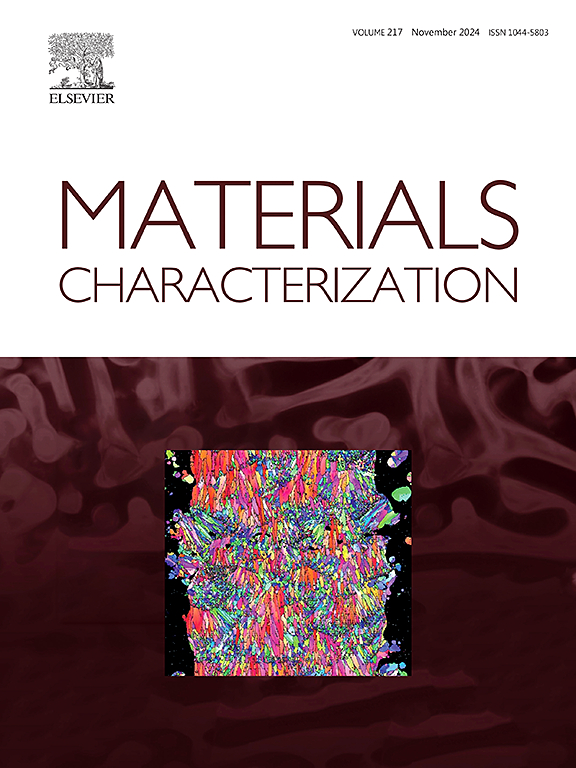Effects of silicon content on the phase composition, microstructure evolution and oxidation resistance of Al-Si coatings on Mo substrate
IF 4.8
2区 材料科学
Q1 MATERIALS SCIENCE, CHARACTERIZATION & TESTING
引用次数: 0
Abstract
The pure Al and Al-Si coatings with different Si contents are prepared on Mo substrate using hot dip method. The effects of Si content on the phase composition, microstructure evolution and oxidation resistance of various coatings are systematically investigated. The results indicate that the pure Al coating is mainly consists of an Al4Mo layer and an Al8Mo3 interface layer, and the Al-Si coatings are made up of Mo(Si,Al)2 layer and Al-Si alloy layer. The oxidation resistance of Al-Si coating is significantly higher than that of Al coating, and the service life of former is 5 and 2 times that of latter under oxidation atmosphere of 900 °C and 1200 °C, respectively. The selective oxidation of Al and Si elements makes the Al2O3-SiO2 oxide layer generated on the surface of Al-Si coating more complex and dense than the single Al2O3 oxide layer on the Al coating surface, which to some extent alleviates the oxidation of Mo element. Furthermore, the average grain area of Mo(Si, Al)2 (0.14–0.56 μm2) is much smaller than that of Al4Mo (1.33 μm2), which makes the Al-Si coating have a denser structure than the Al coating. Compared with Al-20Si and Al-30Si coatings, Al-10Si coatings under the same exposure conditions have lower surface roughness and smaller mass changes per unit area, which is mainly attributed to its smaller grains, smoother surface and thicker coating thickness.
求助全文
约1分钟内获得全文
求助全文
来源期刊

Materials Characterization
工程技术-材料科学:表征与测试
CiteScore
7.60
自引率
8.50%
发文量
746
审稿时长
36 days
期刊介绍:
Materials Characterization features original articles and state-of-the-art reviews on theoretical and practical aspects of the structure and behaviour of materials.
The Journal focuses on all characterization techniques, including all forms of microscopy (light, electron, acoustic, etc.,) and analysis (especially microanalysis and surface analytical techniques). Developments in both this wide range of techniques and their application to the quantification of the microstructure of materials are essential facets of the Journal.
The Journal provides the Materials Scientist/Engineer with up-to-date information on many types of materials with an underlying theme of explaining the behavior of materials using novel approaches. Materials covered by the journal include:
Metals & Alloys
Ceramics
Nanomaterials
Biomedical materials
Optical materials
Composites
Natural Materials.
 求助内容:
求助内容: 应助结果提醒方式:
应助结果提醒方式:


